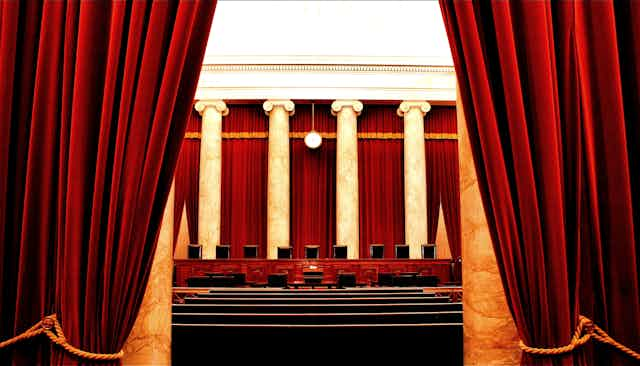Earlier this week, the U.S. Supreme Court decided to halt, at least temporarily, implementation of one of the central components of the federal effort to constrain U.S. climate emissions, the Clean Power Plan.
The decision shocked many court watchers, dismayed those in favor of strong climate action and elicited comparisons to the infamous Supreme Court decision in Bush v. Gore, with many saying that the court had once again abandoned judicial restraint and legal reasoning in favor of bald political gamesmanship.
In my view, this surprise and disillusion is warranted. Even for a court that has been clear in its worries about Environmental Protection Agency overreach, the decision was unprecedented and seems not to be justified by the legal standard for granting these requests to freeze, or “stay,” implementation of a regulation.
These requests for a stay are rarely granted because they upend the usual deference shown by courts to expert agencies and short-circuit the deliberative process that is the hallmark of the judiciary.
And because of the legal process that needs to follow, the stay puts more control over the fate of the Obama administration’s cornerstone climate policy – the EPA Clean Power Plan – into the hands of the next president.
How strong is EPA’s defense?
The Clean Power Plan, which requires states to devise plans for reducing carbon dioxide emissions from power plants, has been challenged legally by more than 20 states and energy companies.
The Supreme Court’s stay dealt a blow to the Clean Power Plan at a very early stage in litigation, coming before any lower court has had an opportunity to assess the validity of the challengers’ legal claims and many years before any emissions-reduction requirements would have gone into effect for power plants.
It is unclear why – and the court did not explain its reasoning – allowing the rule to remain in place as the litigation unfolded would have resulted in irreparable harm or how granting the stay furthers the public interest, both key elements of the relevant legal test. This is especially true because the courts have already put the litigation challenging the Clean Power Plan on an expedited track, meaning that just a few more months would have brought considerably better information for evaluating the merits of the rule.
Moving forward, the stay says something important, but nothing decisive, about the ultimate fate of the Clean Power Plan. The court’s five-to-four decision means that five justices concluded that the challengers have made a “strong showing” that they are “likely to prevail” in their underlying case charging that the Clean Power Plan is unlawful.
But it’s important to note that the arguments in that underlying case are not yet developed: there has been no briefing on the merits of the case yet, nor any oral argument, nor a decision on those legal merits by any judge. The D.C. Circuit will now take up the case and turn its attention to these merits, and my own view is that the EPA’s legal position is quite strong.
The heart of the case challenges EPA’s interpretation of a statutory phrase, “best system of emission reduction,” which is inherently ambiguous. Here, this refers to how states can reduce carbon dioxide emissions from power plants.
Historically, courts have given agencies like EPA wide berth to interpret and implement their governing statutes. And EPA’s approach here, which calls for emissions reductions from increased use of renewable energy and other readily available measures, seems well within the scope of what one might determine is the “best system.”
Once the D.C. Circuit issues a decision, whichever side has lost will appeal to the Supreme Court, which may or may not take up the case. If it does, the justices will look anew at a more fully developed record and reach conclusions independent of, and better informed than, their decision this week. Although a number of commentators have said the Supreme Court effectively ends the EPA Clean Power Plan’s implementation, the court could still rule that it is legal.
Next president looms large
But the Clean Power Plan must do more than survive the next rounds of judicial battle in order to take effect; it must also survive the presidential election. Each of the Republican candidates has signaled a strong distaste for climate regulation, and it is hard to imagine any of them embracing the Clean Power Plan in office.
Now that the stay has been issued, any Republican president in early 2017 will have an easy way to duck out of the Clean Power Plan, by instructing the Department of Justice to cease its vigorous court defense.
If the Supreme Court holds that the rule is not legal, EPA’s next steps will depend on the president, too.
A Democratic administration likely will reissue the rule to conform to whatever the court’s directives are, if that’s possible, and will simultaneously look to other pathways within the Clean Air Act (for example, to Section 115) to achieve emissions reductions. With a Republican win in the next presidential election, by contrast, all bets are off for future federal climate change regulation.
My more glass-half-full Democratic friends wonder whether the silver lining in this week’s stay decision will further mobilize like-minded voters, as it’s more clear than ever how important climate champions in the executive and judicial branches are.


